Update: It seems that CandyCan is now discontinued. We've kept the content up on PricePlow for historical reasons.
Are you ready to start smart snacking? Because today we'd like to introduce you to CandyCan, a healthy candy alternative with a purpose.
Meet CandyCan and Get Ready to Eat CandyCan

Meet CandyCan, the latest way to snack smart using low-sugar supplement gummy bears... where you are meant to eat the entire bag!
CandyCan are healthy gummy bears that have added supplement ingredients, but unlike other supplemental gummies, they come in entire bags! This means you can eat the entire bag, as opposed to having to stop after just one or two gummies... because we all know that never actually happens.
Can you ever really just eat one or two gummies? Krik can't... and neither can we
It turns out, that's actually the backstory of the product. Years ago, CandyCan founder and CEO Krik Angacian (the founder of Protes high-protein snacks) was in a meeting, eating an entire bottle of gummy multivitamins. His business partner, Ryan Wiltse, told him that he was going to make himself sick. But Krik couldn't stop -- those gummies were just too good.
It's all explained in PricePlow Podcast #054 with Krik, but this birthed the idea of CandyCan -- a healthy supplement that you can snack on. Krik and Ryan got to work, but it turns out that it's very difficult to put quality supplement ingredients into gummy form without relying on sugars and syrups - and the duo wanted to keep these low in sugar by using fibers.
Launched with two gummy snack supplements, with more on the way
After countless trials, the first two products were ready to go, and they're the perfect healthy snack. Those products are CandyCan's FOCUS and SLEEP Gummies, and both come in different natural flavors with no artificial colors or sweeteners. They're non-GMO, gluten free, plant-based, and delicious.
The products are detailed below, but first, sign up for our CandyCan news alerts to get notified when we bring Krik onto the PricePlow Podcast:
CandyCan – Deals and Price Drop Alerts
Get Price Alerts
No spam, no scams.
Disclosure: PricePlow relies on pricing from stores with which we have a business relationship. We work hard to keep pricing current, but you may find a better offer.
Posts are sponsored in part by the retailers and/or brands listed on this page.
This area is reserved for Team PricePlow's upcoming videos.
Subscribe to our channel and sign up for notifications so you catch it when it goes live!
CandyCan's Initial Products
This area is subject to updates, as CandyCan will be releasing more gummies. However, at launch, they started with Focus and Sleep, both of which :
-
CandyCan Focus
CandyCan Focus Gummies bring a bit of caffeine synergized with theanine and brain-boosted with choline in the form of Alpha-GPC
Debuting in a mouthwatering Sour Bears flavor, CandyCan Focus is a mildly-energized nootropic supplement that doubles as the perfect sour snack!
Each bag of Focus Gummies will have three different colored bears, bringing three unique, sour tastes:
- Red: Strawberry
- Orange: Peach Apricot Mango
- Yellow: Lemon Lime
Now for the three active ingredients:
-
Mildly caffeinated energy from coffeeberry - 70 mg (yielding 50 mg caffeine)
Each bag has a small bit of caffeine - equivalent to about a half a cup of coffee, coming from natural coffeeberry fruit extract. Most of us know that caffeine wakes you up -- it does so by inhibiting adenosine and phosphodiesterase.[1-3]
What's cool about coffeeberry is that it's not only a natural source that can help with the flavor component, but it may also provide some additional phenolic and antioxidant components naturally found alongside the caffeine.[4]
But even better than caffeine alone is combination put into CandyCan Focus:
-
Synergized with L-Theanine - 75 mg
While there's not enough caffeine in a bag of Focus Gummies to give most users the jitters, there's still a fantastic, synergistic ingredient that helps reduce that sensation, providing improved and more stable focus: L-Theanine.
Theanine is an amino acid found in tea, and helps keep users a bit more on the calm side, but without being sedative.[5]
Even better, however, is how well the ingredient synergizes with caffeine. When taken together, L-theanine and caffeine lead to great increases in cognitive performance, mood, attention, and alertness all at once![6-8]
While the studies cited above use more caffeine (and likely more theanine) than we have in a bag of CandyCan, the fact remains that these two pair incredibly well, and feel great together. There's more that can be done, though:
-
Added choline from Alpha-GPC - 75 mg
The CandyCan Focus Ingredients, pulled from CandyCan's website. They now disclose the amount of the active ingredients inside, as shown on this page!
Inside of the brain, we have a neurotransmitter known as acetylcholine, which we often call "the learning neurotransmitter" since it's found in neuromuscular junctions and helps with a great deal of visceral motor functions.[9-11] To ensure our brains are able to generate enough of this incredible compound, we need its building blocks, one of the most important of which is choline.[12,13]
One of the best sources of choline is Alpha-GPC, short for alpha-glycerophosphocholine -- since that's as much of a mouthful as these Focus Gummies, we just call it Alpha-GPC. This highly bioavailable ingredient can cross the blood-brain-barrier, helping your body to synthesize more acetylcholine after it's first converted to phosphorylcholine.[14]
This means that added Alpha-GPC can help provide better physical and psychomotor performance, by way of helping your brain produce more of our critical learning neurotransmitters.
CandyCan Focus Nutrition Facts
-
Calories: 60
-
Fat: 0
-
Carbohydrates: 24g (3 net carbs)
-
Dietary Fiber: 21g
-
Total Sugars: 2g
-
-
Protein: 0g
The rest of the ingredients come in the form of flavoring, natural colors, natural sweeteners, and the fiber discussed below. Malic acid is added to provide the sour taste.
This is a simple -- yet incredibly effective -- three-ingredient snack that will actually help you in more ways than just satisfying your sweet/sour cravings!
-
CandyCan Sleep
On the flip side of FOCUS, you have the CandyCan SLEEP gummies. These are of course meant to be taken before bed to help you fall asleep more quickly and sleep more soundly. Additionally, they perfectly satisfy any nighttime sweet cravings, which are always great to avoid.
Again, we have the same flavors, only not in sour form:
- Red: Strawberry
- Orange: Peach Apricot Mango
- Yellow: Lemon Lime
Inside, we get two supplemental ingredients in a not-so-sour, sweet gummy snack:
-
Lemon Balm Extract - 100 mg
Lemon Balm is an herb in the mint family that we believe is the most underrated sleep-supporting ingredient on the market. Scientifically known as Melissa offinicnalis, it has a charming lemon scent and is well-known for its anti-stress, calming, and mildly sedative effects.[15]
Its constituents of rosmarinic acid, caffeic acid, and melitric acid[16,17] yield many of its benefits, and you may see it in other supplements, teas, and other cosmetics (sometimes labeled as "Melissa leaves").
Research has shown that supplementing lemon balm can reduce stress and anxiety while boosting cognitive performance and mood, but most of those studies are admittedly at higher doses.[18-20] Fortunately, the feel-good effects still do seem to confer with CandyCan SLEEP Gummies in our beta testing.
-
Melatonin - 3 mg
If it's a sleep aid, then it most likely has melatonin inside!
This naturally-occurring hormone is produced by the pineal gland in the brain, which doesn't begin secreting it until the sun goes down and the lights are dimmed.[21,22] When that happens, the melatonin produced leads to a sedating effect that helps regulate sleep cycle.
It turns out, supplementing more melatonin can improve sleep quality as well, reducing the amount of time it takes to fall asleep and subsequently decreasing the number of times its users wake up during the night.[23-25]
There are many different dosing strategies, but 3 milligrams is the "gold standard" dose that has been shown to work quite effectively. We also posit that having the melatonin in a slow-digesting fiber may actually serve as a kind of "timed release" melatonin, although that's just conjecture.
It also bears mentioning that blue light (ie. staring at your phone) before bed is very counterproductive to melatonin production,[26] and these SLEEP Gummies will work far better if you focus on better sleep hygiene / pre-sleep habits.
CandyCan Sleep Nutrition Facts
-
Calories: 60
-
Fat: 0
-
Carbohydrates: 25g (3 net carbs)
-
Dietary Fiber: 22g
-
Total Sugars: 2g
-
-
Protein: 0g
Added benefits of not having loads of sugar before bed
Anecdotally speaking, we've found through blood glucose monitoring that there are many benefits of avoiding blood sugar spikes before and during sleep. If we can keep blood sugar levels under control at night, we believe the body can get to work on burning fat (instead of burning sugar, which displaces fat oxidation[27,28]), and have found that blood sugar roller coasters during sleep cause unwanted nighttime disturbances.
If eating CandyCan SLEEP gummies is an alternative to, say, a small bowl of pre-bed ice cream, we will take it as a replacement any day of the week -- and that's not even considering the incredible benefits of melatonin and lemon balm that come for the ride.
On the natural side and low in sugar
Before detailing CandyCan's products, it's important to quickly note that this is a low-sugar snack that's meant to provide health benefits while curbing snack cravings, yet won't put you on a blood sugar rollercoaster.
Naturally flavored, colored, and sweetened
First and foremost, all of the gummies are sweetened with monk fruit extract and stevia, and use natural colors and flavors. While it's not "organic" because we don't have ingredients like "organic Alpha-GPC", it's about as close as a food-based supplement like this will come.
High in fiber, no high-glycemic syrups used
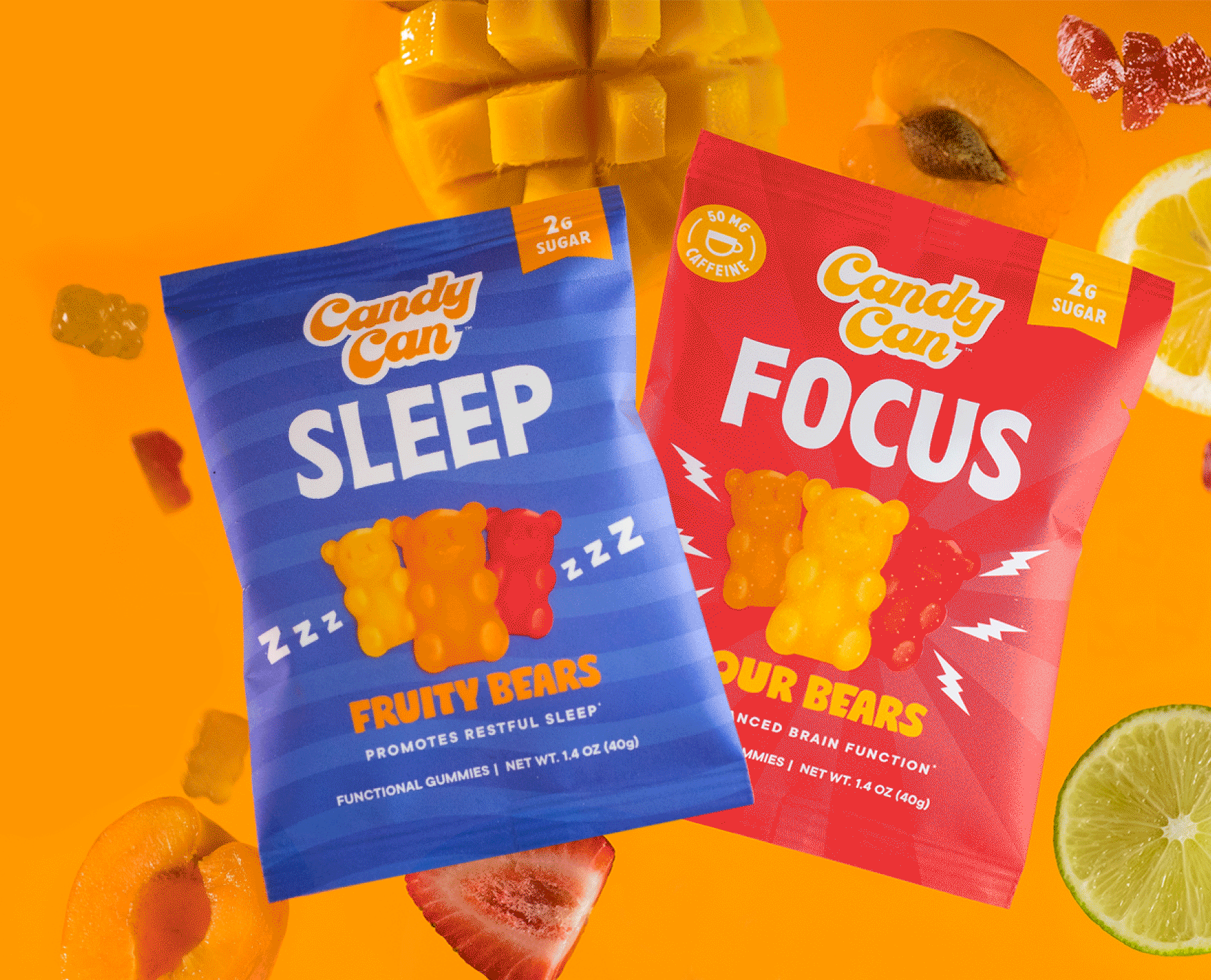
Using all natural flavoring, colors, and sweeteners alongside fiber instead of sugar, CandyCan keeps the blood sugar effects minimal!
Rather than use glucose syrup, corn syrup, or other forms of sugar, CandyCan was made with non-GMO soluble corn fiber and pectin, leading to a low glycemic snack that can still help fill you up.
Soluble corn fiber has been shown to have minimal glycemic impacts, and can actually improve blood sugar when replacing traditional carbohydrates.[29] Additionally, thanks to its partial fermentation by gut microbiota, research has shown it to be "beneficial to gut health while leading to minimal gastrointestinal upset"[30] - exactly what we want from a fiber that's replacing sugars and syrups in traditional gummies.
Pectin, on the other hand, is added for texture. It's a soluble fiber found in plant cell walls and is often used as a gelling agent in jams and jellies.[31,32] There are many health benefits to its use, many come from its ability to slower gastric emptying and generate highly-beneficial short-chain fatty acids once it's fermented by our beneficial microbiota.[33]
Combined, these two ingredients make for an incredible gummy base that is more diet-friendly than sugar, glucose syrups, and other similar blood-sugar-spiking ingredients.
Additionally, they're gluten-free, non-GMO, low in allergens (nut-free), and plant-based.
CandyCan is going to crush it
Here's the honest truth: we were going to write this article, and then we ate all of the Gummies. And while writing this, we ate a second batch of CandyCan Focus Gummies that were shipped to us (disclaimer: they were sent for free).
There's simply no doubt about it: given Krik Angacian's experience in the functional food industry and the way you can snack on these supplemental gummies with limited downside, we see a huge future for CandyCan.
Gone are the days of taking one or two gummies and having to stop yourself from eating more. You need a whole bag. And now you have it -- without overdosing on the vitamins inside!
FOCUS and SLEEP made for a great launch, but were just the beginning. There will be more products, and we hope there will be more flavors too. This is an unstoppable snack, and it's one that has ingredients we love. What more can you ask for to shut that sweet tooth down?
Whether it's to jolt you back up or get you back to bed, these gummies get the job done, and they're fun. Expect big things from CandyCan. And sign up for our CandyCan alerts below so that we can notify you when more news is out:
CandyCan – Deals and Price Drop Alerts
Get Price Alerts
No spam, no scams.
Disclosure: PricePlow relies on pricing from stores with which we have a business relationship. We work hard to keep pricing current, but you may find a better offer.
Posts are sponsored in part by the retailers and/or brands listed on this page.

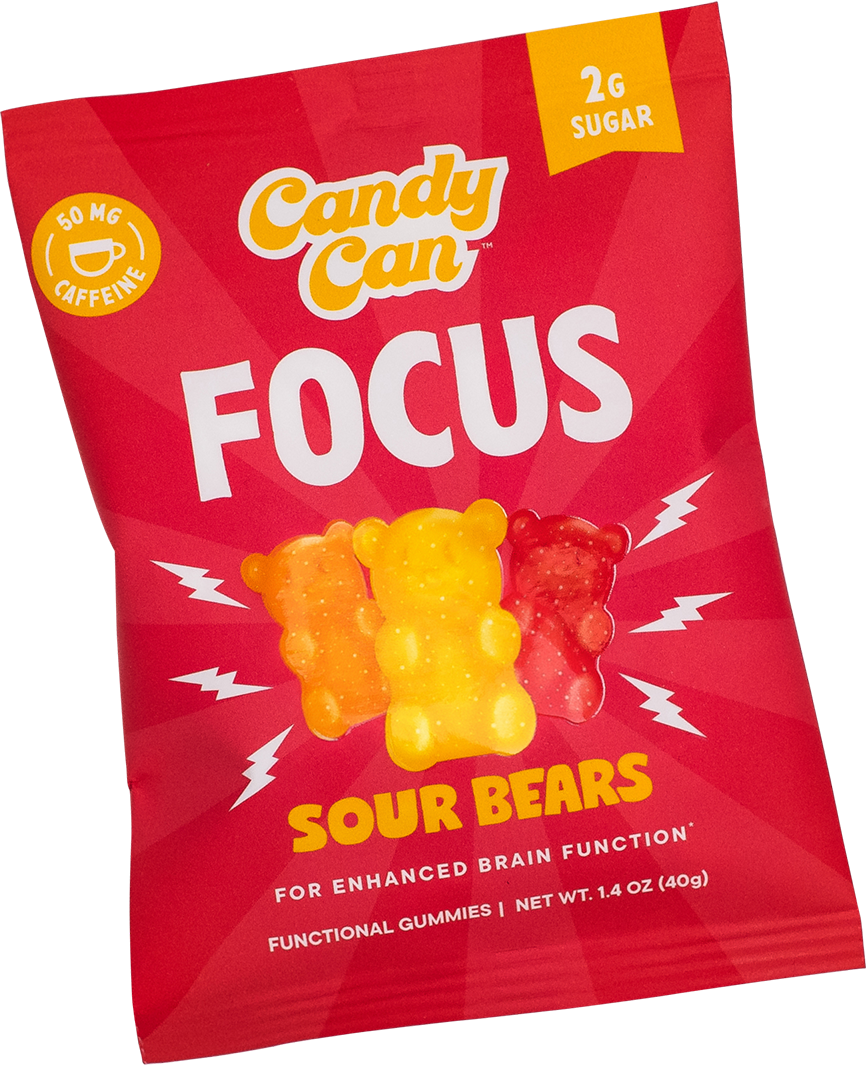
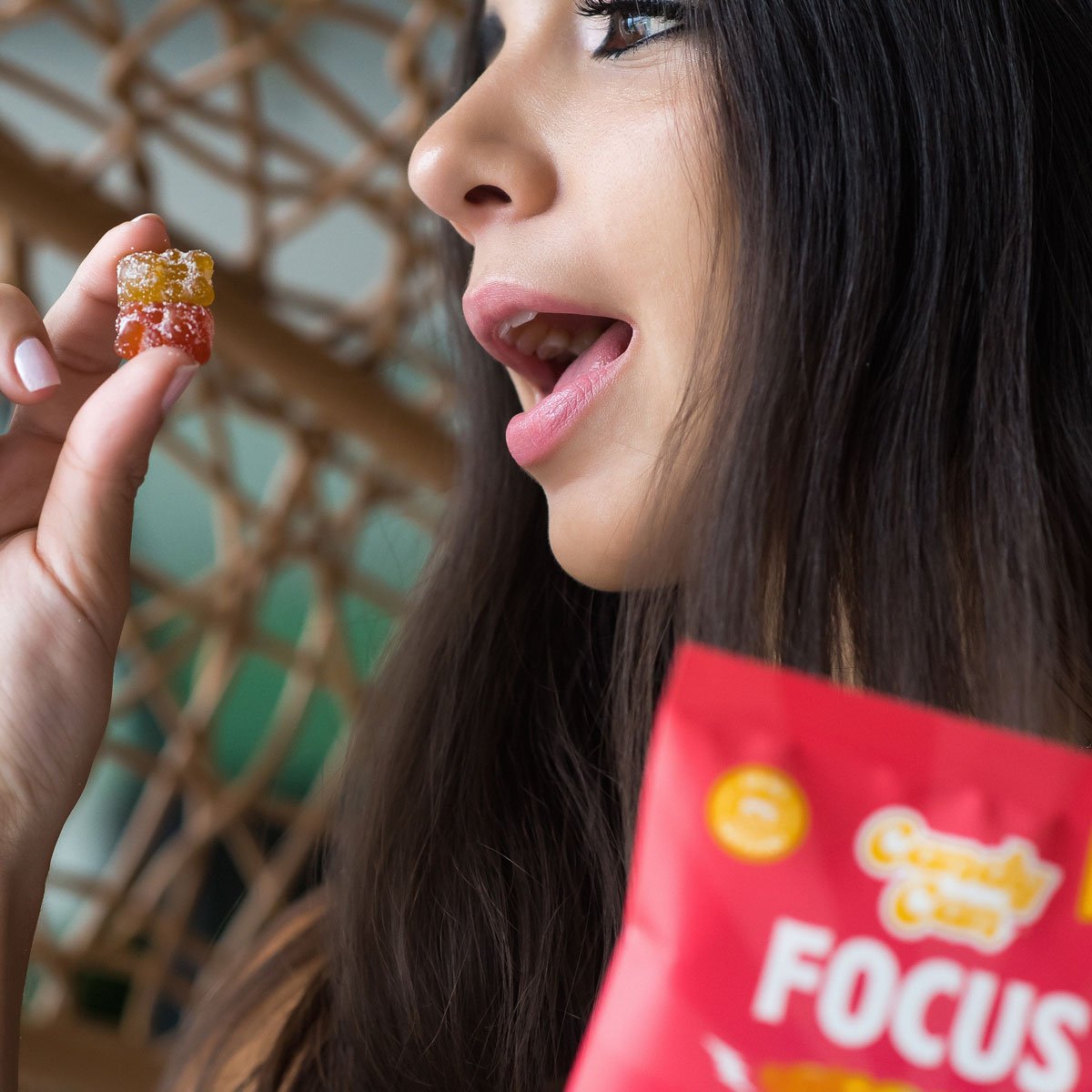
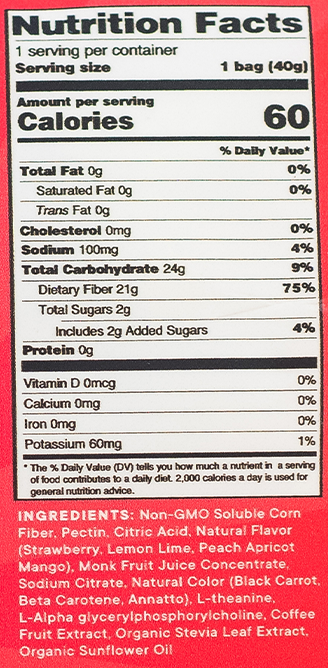
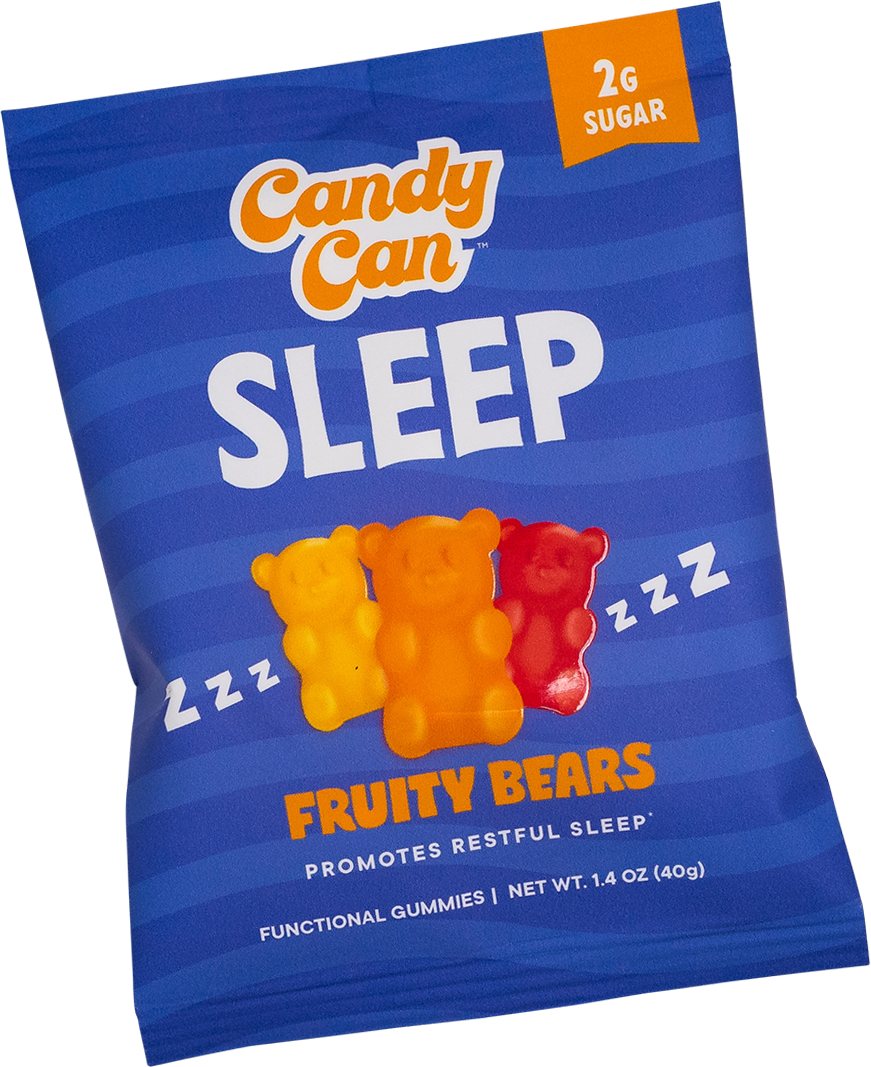





Comments and Discussion (Powered by the PricePlow Forum)